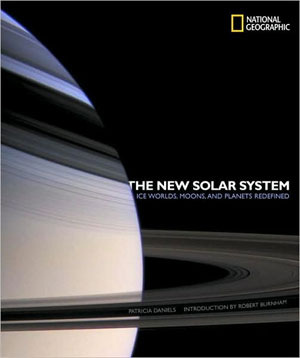Review: The New Solar Systemby Jeff Foust
|
| As one would expect from a large format book published by National Geographic, there are a lot of high-quality full-color images throughout. |
The book follows the tour structure used by so many other books, although starting with a history of our observations and studies of the solar system before going to the Sun and then working its way out. (Even the book’s title is not novel: it shares it with a book that features chapters written by planetary scientists and astronomers; the latest edition of that book was published a decade ago.) The book provides an overview of our current knowledge of the planets and other objects in our solar system at a level understandable to an educated layman. It also going into issues ranging from the threats asteroids and comets pose to the Earth to the search for life beyond the Earth.
What sets The New Solar System apart, though, is the book’s design. As one would expect from a large format book published by National Geographic, there are a lot of high-quality full-color images throughout. However, it’s clear considerable thought went into the book’s design, given the attention to detail throughout. For example, a clever icon in the upper-left corner of each page—a set of circles that resemble planets and moons—helps the reader identify not just what chapter they’re in, but what section of that chapter. The book does include references to web sites, but they’re listed in the bottom margin of the page in gray type: clear enough to be seen without being distracting.
If you’re already familiar with the current state of knowledge about the solar system, you won’t learn much from The New Solar System. However, if you’re not, or if know someone who is curious about it but perhaps overwhelmed by the vast array of books and other resources available, then this book is a good place to start. Of course, given the pace of discoveries by scientists using telescopes and spacecraft, in a few years portions of this book will too be out of date. Which means time for yet another book, or another edition of this book, on our celestial neighborhood.
